|
Books Should Be Free Loyal Books Free Public Domain Audiobooks & eBook Downloads |
|
|
Books Should Be Free Loyal Books Free Public Domain Audiobooks & eBook Downloads |
|
Author Collection |
|---|
By: Leo Tolstoy (1828-1910) | |
|---|---|
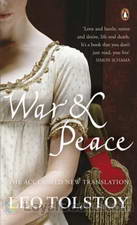 War and Peace
War and Peace
Leo Tolstoy's War and Peace chronicles the lives of five Russian aristocratic families during Napoleon's invasion of Russia. Many considered this book to be the best Russian work of literature of all time and it is massive in scale. The book is divided in four volumes and the chapters don't just contain the narrative of the plot to the novel but philosophical discussions as well. This may be intimidating to average book readers but they shouldn't be discouraged to try reading War and Peace. After all, this book was written for all and not just for intellectuals... | |
 War and Peace, Book 2: 1805
War and Peace, Book 2: 1805
Leo Tolstoy's War and Peace chronicles the lives of five Russian aristocratic families during Napoleon's invasion of Russia. Many considered this book to be the best Russian work of literature of all time and it is massive in scale. The book is divided in four volumes and the chapters don't just contain the narrative of the plot to the novel but philosophical discussions as well. This may be intimidating to average book readers but they shouldn't be discouraged to try reading War and Peace. After all, this book was written for all and not just for intellectuals... | |
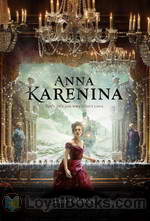 Anna Karenina
Anna Karenina
Leo Tolstoy’s psychological novel Anna Karenina follows the life of the enchanting and rebellious Anna who seeks to break free from the shackles of society. Set in late 19th century Russia, Anna is portrayed as an ideal, cultivated aristocratic wife, mother and model for women alike. Although at first glance she seems to have it all in life, Anna yearns for love and affection- something her cold diplomatic husband cannot provide. She grows discontent of their loveless relationship, and is tired of the façade she has been putting up in order to sustain a positive social image... | |
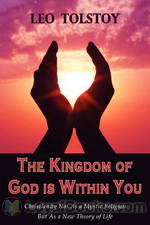 The Kingdom of God is within you
The Kingdom of God is within you
The title of the book comes from Luke 17:21. It is a non-fiction work of the famous Russian author Leo Tolstoy. He wrote it after many years of reflexion on Christianity and Jesus. Many subjects are present such as wars, non-violence, misunderstanding by believers of the faith, etc. | |
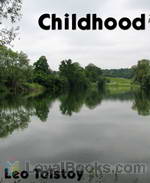 (Russian) Childhood
(Russian) Childhood
Childhood (Детство [Detstvo]; 1852) is the first novel in Leo Tolstoy’s autobiographical trilogy. They are the works that launched his writing career. These books earned him instant acclaim. This book describes the major physiological decisions of boyhood that all boys experience. | |
 (Dutch) Anna Karenina (Nederlands)
(Dutch) Anna Karenina (Nederlands)
Het gaat hier om een (ingekorte) Nederlandse vertaling van het klassieke werk van Leo Tolstoy. Een aristocratische vrouw verlaat haar ongelukkig huwelijk voor een nieuwe liefde. | |
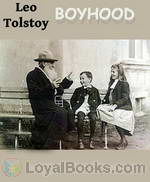 Boyhood
Boyhood
Boyhood is the second in Tolstoy's trilogy of three autobiographical novels, including Childhood and Youth, published in a literary journal during the 1850s. (Introduction by Bill Boerst) | |
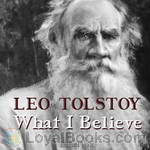 What I Believe
What I Believe
"The inner working of my soul, which I wish to speak of here, was not the result of a methodical investigation of doctrinal theology, or of the actual texts of the gospel; it was a sudden removal of all that hid the true meaning of the Christian doctrine – a momentary flash of light, which made everything clear to me. It was something like that which might happen to a man who, after vainly attempting, by a false plan, to build up a statue out of a confused heap of small pieces of marble, suddenly... | |
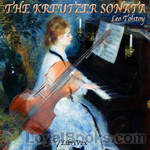 The Kreutzer Sonata
The Kreutzer Sonata
Publication of The Kreutzer Sonata in 1889 was a significant intellectual event worldwide. Censored in Russia, it set off an explosive debate in Europe, America, and Asia on matters relating to sexual abstinence and the hypocrisy of marriage. The novella emphasizes Tolstoy's controversial view on sexuality, which asserts that physical desire is an obstacle to relations between men and women and may result in tragedy. The Kreutzer Sonata has been recognized as among the best examples of Tolstoy's art of storytelling.(Introduction by Dorlene Kaplan) | |
 (Russian) Учение Христа, изложенное для детей
(Russian) Учение Христа, изложенное для детей
In 1908 Leo Tolstoy organized a school for peasant children, age 10-13, in his house. During lessons he expounded them the most clear and important passages from Gospels. From those conversations Tolstoy composed that book. | |
 (Tagalog) Sa Ano Nabubuhay Ang Tao
(Tagalog) Sa Ano Nabubuhay Ang Tao
| |